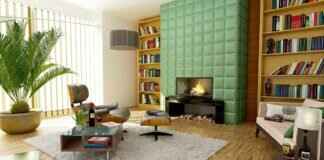Discover the charm of old design beds that offer elegance and timeless appeal. This article explores various styles, materials, and design elements that can transform your bedroom into a sanctuary of sophistication.
When it comes to bedroom design, few elements can evoke a sense of history and artistry like old design beds. These beds not only serve as functional furniture but also as stunning focal points that reflect various eras of craftsmanship. In this article, we delve into the enchanting world of old design beds, examining their styles, materials, and the unique characteristics that make them so desirable.
- Understanding Old Design Bed Styles: Old design beds come in a variety of styles, each offering its unique charm. From the romantic Victorian to the rustic Colonial, these beds encapsulate the essence of their respective periods.
- Victorian Beds: A Touch of Romance: Known for their intricate details and opulent designs, Victorian beds often feature ornate carvings and luxurious fabrics. These beds bring a sense of grandeur and romance to any bedroom.
- Colonial Beds: Simplicity and Functionality: Colonial beds emphasize sturdy construction and minimal ornamentation, reflecting the practical needs of early settlers. Their straightforward designs offer a timeless appeal.
- Craftsman Beds: The Arts and Crafts Movement: Celebrating handcrafted details and natural materials, Craftsman beds focus on quality and simplicity, making them a popular choice for those who appreciate artisanal craftsmanship.
- French Provincial Beds: Elegance with a Rustic Touch: Combining elegance with rustic charm, French Provincial beds often feature curved lines and intricate detailing, creating a romantic atmosphere in the bedroom.
Key Features of Old Design Beds
| Style | Key Features | Materials |
|---|---|---|
| Victorian | Ornate carvings, high headboards, luxurious upholstery | Mahogany, oak, wrought iron |
| Colonial | Sturdy construction, minimal ornamentation | Pine, maple |
| Craftsman | Clean lines, sturdy frames, natural wood | Oak, cherry |
| French Provincial | Cabriole legs, tufted upholstery, floral motifs | Beech, walnut |
Accessorizing with Old Design Beds
To enhance the charm of old design beds, consider the following:
- Bedding: Choose soft, luxurious fabrics that complement the bed’s style.
- Color Palette: Rich jewel tones or soft pastels can elevate the overall aesthetic.
- Decor: Vintage accessories and artwork can create a cohesive look.
Modern Interpretations of Old Design Beds
In contemporary interiors, old design beds can be seamlessly integrated with modern decor. This fusion allows for a unique expression of style while honoring historical design principles. When mixing old and new, consider:
- Scale and Proportion: Ensure that the bed’s size complements the surrounding furniture.
- Color and Texture: Use contrasting textures and colors to create visual interest.
- Personal Touches: Incorporate personal items that reflect your style, making the space uniquely yours.
Old design beds are more than just a place to sleep; they are a testament to the artistry and craftsmanship of bygone eras. By understanding their styles and characteristics, you can transform your bedroom into a sophisticated sanctuary that tells a story.
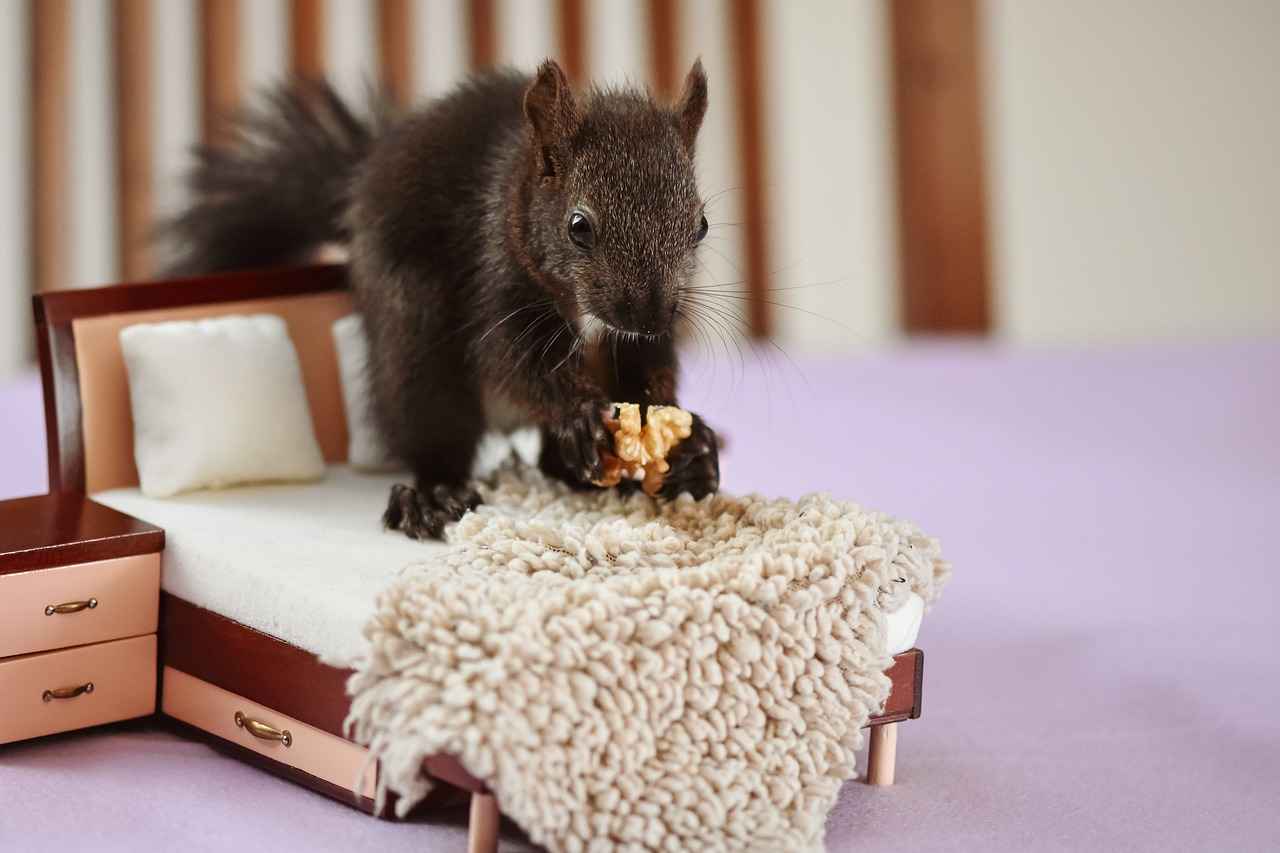
Understanding Old Design Bed Styles
Old design beds are more than just furniture; they are a testament to the artistry and craftsmanship of their respective eras. These beds come in a variety of styles, each with its own unique characteristics that not only serve functional purposes but also tell stories of the past. From the ornate Victorian beds to the minimalist Colonial designs, each style provides a glimpse into historical craftsmanship and reflects the cultural values of its time.
Old design beds can be categorized into several distinct styles, each showcasing unique features and materials. Here are some prominent styles:
- Victorian Beds: Characterized by intricate details and luxurious fabrics, Victorian beds often feature elaborate carvings, high headboards, and sumptuous upholstery. They are designed to evoke a sense of grandeur and romance.
- Colonial Beds: Emphasizing simplicity and functionality, Colonial beds are known for their sturdy construction and minimal ornamentation. These designs reflect the practical needs of early settlers and often incorporate local materials.
- Craftsman Beds: Celebrating the Arts and Crafts movement, Craftsman beds are distinguished by their handcrafted details and natural materials. They focus on quality and simplicity, showcasing clean lines and sturdy frames.
- French Provincial Beds: Combining elegance with rustic charm, French Provincial beds feature soft colors, curved lines, and intricate detailing. They are ideal for creating a romantic and inviting atmosphere.
Victorian beds are a hallmark of the Victorian era, characterized by their elaborate designs and intricate craftsmanship. The use of rich materials such as mahogany and wrought iron adds to their opulence. Key features of Victorian beds include:
- High Headboards: Often adorned with detailed carvings, these headboards serve as a focal point in the bedroom.
- Luxurious Upholstery: Fabrics such as velvet and brocade are commonly used, enhancing the bed’s grandeur.
Colonial beds represent a more practical approach to design, reflecting the needs of early American settlers. These beds are typically made from sturdy woods like oak and pine, designed to withstand the test of time. Their simplicity and functionality make them a popular choice for those seeking a more understated aesthetic.
Craftsman beds are known for their focus on natural materials and craftsmanship. The Arts and Crafts movement emphasized the importance of handmade goods, and Craftsman beds embody this philosophy. Popular wood choices include oak and cherry, both of which provide durability and a beautiful finish.
French Provincial beds are synonymous with elegance and charm. Their design elements, such as cabriole legs and floral motifs, create a timeless appeal. To enhance the French Provincial aesthetic, consider using soft fabrics and vintage accessories that complement the bed’s design.
Today, many homeowners are opting for modern interpretations of old design beds, blending traditional elements with contemporary aesthetics. This fusion allows for personalization while maintaining a timeless appeal. Key tips for integrating old design beds into modern spaces include:
- Consider Scale: Ensure that the size of the bed complements the overall dimensions of your room.
- Play with Color: Choose color palettes that harmonize with both old and new elements.
- Mix Textures: Combine different materials to create depth and interest in your bedroom design.
In conclusion, the world of old design beds offers a rich tapestry of styles and histories. Each bed is a piece of art that reflects the era it comes from, providing not only comfort but also a connection to the past.
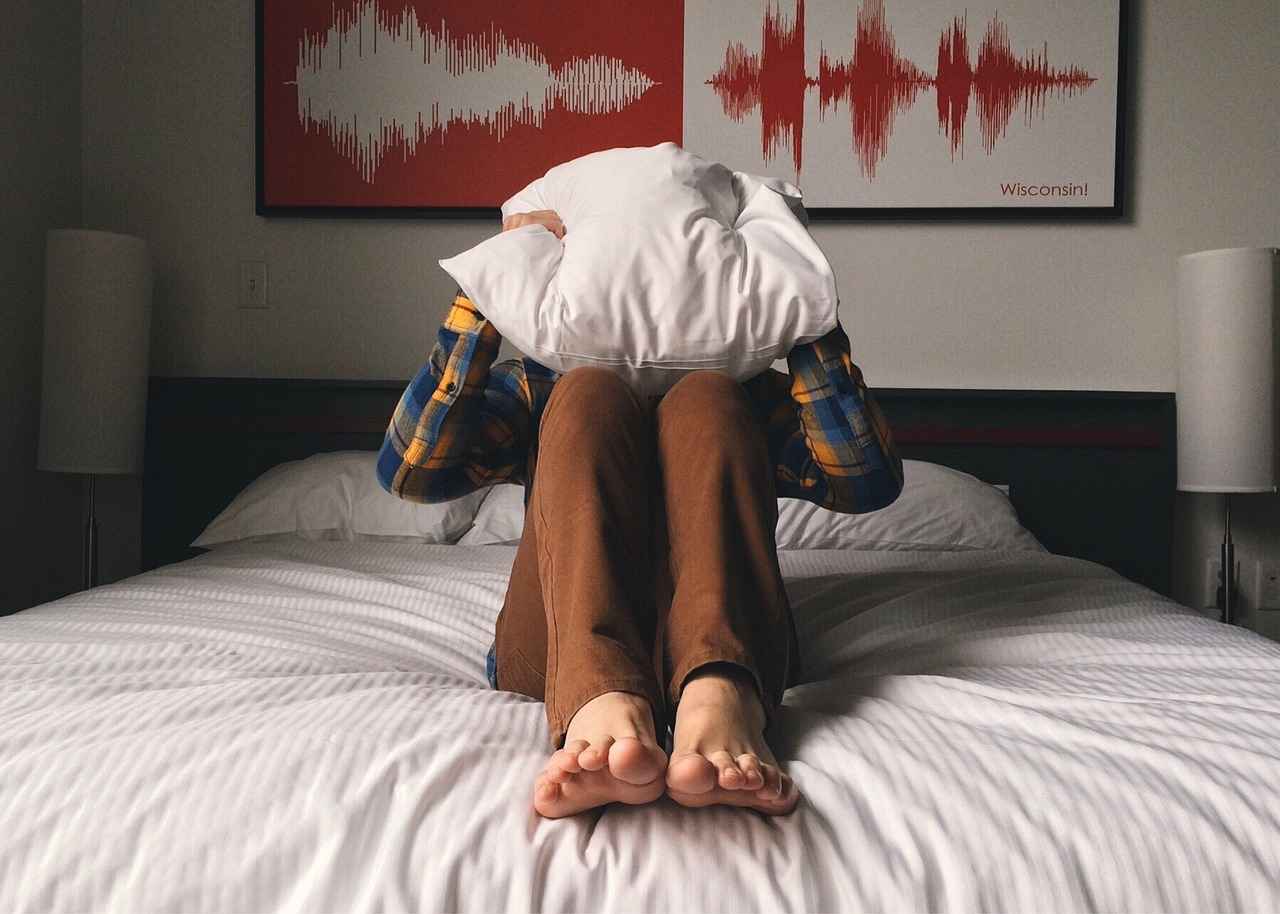
Victorian Beds: A Touch of Romance
Victorian beds are truly a celebration of elegance and craftsmanship, embodying the essence of the Victorian era’s opulence. These beds are not just furniture; they are a statement piece that can transform any bedroom into a romantic sanctuary. Characterized by their intricate details and rich materials, Victorian beds reflect a time when artistry and quality were paramount in design.
One of the most striking features of Victorian beds is their ornate carvings. Skilled artisans of the time often spent hours creating elaborate designs that adorned headboards and footboards. These carvings could depict floral motifs, scrollwork, or even mythical creatures, serving as a testament to the craftsmanship of the era. The use of luxurious fabrics such as velvet and brocade further enhances the grandeur, providing not just comfort but a visual feast for the eyes.
- High Headboards: Victorian beds typically feature tall headboards that command attention. These headboards often serve as a focal point in the bedroom.
- Elaborate Footboards: The footboards of Victorian beds are equally impressive, often mirroring the intricate designs found on the headboard.
- Luxurious Upholstery: Upholstered elements in rich colors and textures add depth and warmth, inviting relaxation.
When it comes to materials, mahogany, oak, and wrought iron are common choices for Victorian beds. Each material brings its own unique attributes to the design. Mahogany is prized for its deep, rich color and durability, while oak offers a more rustic charm. Wrought iron, often used in combination with wood, adds a touch of industrial elegance, showcasing the versatility of Victorian design.
Color palettes play a crucial role in enhancing the romantic atmosphere of a Victorian-inspired bedroom. Rich jewel tones like emerald green, deep burgundy, and royal blue are popular choices, evoking a sense of luxury. Soft pastels can also be incorporated to create a more delicate and airy feel, balancing the heaviness of the ornate designs.
Incorporating Victorian beds into modern interiors can be a delightful challenge. The key is to blend the romantic elements of Victorian design with contemporary aesthetics. This can be achieved by pairing a Victorian bed with minimalist decor or modern art pieces, creating an intriguing contrast that honors both styles.
Accessorizing is another essential aspect of achieving a cohesive Victorian look. Consider using lace curtains, vintage-inspired bedding, and antique accessories to enhance the overall aesthetic. Soft lighting, perhaps from a vintage chandelier, can further elevate the ambiance, making the bedroom a true retreat.
In conclusion, Victorian beds are more than just a place to sleep; they are a celebration of history, artistry, and romance. Their intricate designs and luxurious materials invite you to create a bedroom that is both elegant and timeless. By understanding the key features and design elements of Victorian beds, you can transform your space into a sanctuary that reflects your personal style while paying homage to a rich historical legacy.
Key Features of Victorian Beds
Victorian beds are a stunning representation of the opulence and craftsmanship of the Victorian era, which spanned from 1837 to 1901 during Queen Victoria’s reign. These beds are characterized by their intricate designs and luxurious materials, making them a focal point in any bedroom. Understanding the key features of Victorian beds not only enhances appreciation for their beauty but also provides insight into the historical context from which they emerged.
- High Headboards: One of the most striking features of Victorian beds is their high headboards. Often reaching impressive heights, these headboards are typically adorned with elaborate carvings, tufting, and sometimes even gilded accents. They serve not only as a decorative element but also provide a sense of grandeur and intimacy to the sleeping space.
- Elaborate Footboards: Complementing the headboards, Victorian footboards are equally ornate. These footboards often feature intricate designs that mirror the craftsmanship of the headboard, creating a cohesive look. They can range from simple to highly decorative, sometimes incorporating floral motifs or scrollwork that enhance the overall aesthetic.
- Luxurious Upholstery: The upholstery of Victorian beds is a hallmark of their design. Rich fabrics such as velvet, brocade, and silk are commonly used, often in deep, jewel-toned colors. This luxurious upholstery not only adds comfort but also contributes to the opulent feel of the bed, inviting one to indulge in rest and relaxation.
- Ornate Carvings: Carvings on Victorian beds are intricate and tell a story of their own. From floral patterns to mythical creatures, these carvings reflect the artistic trends of the time and showcase the skill of the craftsmen. Each bed is often a unique piece of art, with details that can captivate the eye.
- Sturdy Construction: While Victorian beds are known for their aesthetic appeal, they are also built to last. Crafted from solid hardwoods like mahogany and oak, these beds are designed to withstand the test of time. The combination of sturdy construction and intricate detailing makes them a valuable addition to any home.
In addition to these key features, Victorian beds often incorporate historical significance into their design. They reflect the social status and wealth of their owners, often being passed down through generations. As such, they are not just functional pieces of furniture but also heirlooms that carry stories and memories.
Understanding the key features of Victorian beds allows us to appreciate their historical context and the artistry involved in their creation. Whether you are a collector, a decorator, or simply someone who admires beautiful furniture, recognizing these elements can enhance your experience and appreciation of Victorian design.
In conclusion, the charm of Victorian beds lies in their ability to blend functionality with artistry. The high headboards, elaborate footboards, luxurious upholstery, and intricate carvings create a sense of romance and nostalgia that is hard to replicate in modern designs. By embracing these key features, one can truly transform a bedroom into a sanctuary of elegance and timeless beauty.
Materials Used in Victorian Beds
When it comes to Victorian beds, the choice of materials plays a crucial role in defining their elegance and durability. The Victorian era, known for its rich aesthetic and attention to detail, saw the use of several materials that not only enhanced the visual appeal of beds but also ensured their longevity. This section delves into the most common materials used in Victorian bed designs, highlighting their unique characteristics and contributions to the overall style.
- Mahogany: This luxurious hardwood is renowned for its rich, dark color and fine grain. Mahogany beds often feature intricate carvings and can be polished to a high sheen, making them a centerpiece in any bedroom. The durability of mahogany ensures that these beds withstand the test of time, while their beauty adds a touch of sophistication.
- Oak: Another popular choice, oak is celebrated for its strength and versatility. Available in various finishes, oak can range from light to dark tones, allowing for customization in Victorian designs. Its natural grain patterns add texture, and when crafted into beds, oak offers both stability and a classic look that complements the ornate features typical of Victorian style.
- Wrought Iron: For those seeking a more industrial yet romantic touch, wrought iron is an excellent option. Often used in the construction of bed frames, wrought iron allows for intricate designs and shapes, contributing to the opulent aesthetic of Victorian beds. The durability of wrought iron ensures that these beds are not only beautiful but also sturdy, making them a lasting investment.
- Walnut: Known for its rich hues and intricate grain patterns, walnut is another favored material in Victorian bed construction. Its deep color adds warmth and elegance to any bedroom setting. Walnut beds often feature elaborate carvings and are appreciated for their luxurious appearance and robust nature.
- Upholstered Fabrics: In addition to wooden frames, Victorian beds often incorporate lavish upholstery. Fabrics such as velvet, silk, and brocade are commonly used to enhance comfort and visual appeal. These soft materials are typically adorned with intricate patterns and vibrant colors, adding to the romantic atmosphere of the Victorian style.
The combination of these materials not only reflects the craftsmanship of the Victorian era but also contributes to the enduring popularity of Victorian beds in modern interiors. Each material brings its own unique qualities, allowing for a diverse range of designs that can suit various tastes and preferences.
In summary, when selecting a Victorian bed, the choice of materials is paramount. Whether opting for the classic elegance of mahogany, the sturdy reliability of oak, or the intricate designs of wrought iron, each material plays a vital role in defining the bed’s character. Understanding these materials allows homeowners to appreciate the artistry and craftsmanship that goes into creating these timeless pieces.
Color Palettes for Victorian Bedrooms
When designing a Victorian-inspired bedroom, the choice of color palette plays a pivotal role in creating the desired ambiance. The Victorian era, known for its opulence and intricate designs, often featured a harmonious blend of rich jewel tones and soft pastels. This article delves into how these colors can transform your space, elevating the romantic atmosphere synonymous with Victorian design.
Rich Jewel Tones
Rich jewel tones such as deep emerald greens, royal blues, and vibrant burgundies are hallmarks of Victorian interiors. These colors evoke a sense of luxury and grandeur, making them ideal for statement pieces in the bedroom. For instance, a velvet upholstered bed in a deep sapphire can serve as a stunning focal point. Complementing this with gold accents in decor or fixtures enhances the overall richness of the space.
Soft Pastels
In contrast, soft pastels like pale pinks, lavender, and mint green add a touch of delicacy and tranquility. These hues are perfect for wall colors, creating a serene backdrop that balances the boldness of jewel tones. A pastel wallpaper adorned with floral motifs can bring an air of elegance and softness, making the room feel welcoming and cozy.
Combining Jewel Tones and Pastels
To achieve a harmonious look, consider combining jewel tones with soft pastels. For example, a pastel-colored wall can be beautifully accented with jewel-toned drapes or bedding. This combination not only creates visual interest but also reflects the eclectic nature of Victorian design, where contrasting elements coexist in perfect harmony.
Accent Colors
Accent colors play a crucial role in tying the overall look together. Consider incorporating neutral shades like beige or cream to balance out the vibrancy of jewel tones and the softness of pastels. These colors can be used in furniture, such as a cream-colored dresser or beige area rugs, providing a grounding effect that enhances the elegance of the room.
Textures and Patterns
In addition to color, the choice of textures and patterns can further elevate the Victorian aesthetic. Layering different fabrics, such as silk, lace, and brocade, can create depth and interest. For example, a brocade bedspread paired with lace-trimmed pillows can add a luxurious touch that is quintessentially Victorian.
Conclusion
Choosing the right color palette is essential in crafting a Victorian-inspired bedroom that exudes romance and elegance. By thoughtfully combining rich jewel tones with soft pastels, and incorporating balanced accents and textures, you can create a sanctuary that reflects the timeless beauty of the Victorian era.
Colonial Beds: Simplicity and Functionality
Colonial beds represent a timeless approach to bedroom design, emphasizing simplicity and functionality. Rooted in the practical needs of early settlers, these beds are characterized by their robust construction and minimal ornamentation, making them both durable and aesthetically pleasing. This article delves deeper into the unique features, materials, and the historical significance of Colonial beds, providing insights for those looking to incorporate this classic style into their homes.
Colonial beds are typically crafted with sturdy frames that prioritize durability over elaborate designs. The focus on functionality is evident in their straightforward lines and lack of excessive embellishments. Here are some key characteristics:
- Sturdy Construction: Built to withstand the test of time, Colonial beds often feature solid wood frames, ensuring long-lasting use.
- Minimal Ornamentation: Unlike more ornate styles, Colonial designs favor simplicity, reflecting the practical lifestyle of early American settlers.
- Functional Design: Many Colonial beds include features such as built-in storage or adjustable height, catering to the needs of everyday life.
Traditionally, Colonial beds were constructed from readily available materials, predominantly hardwoods like oak, maple, and pine. These materials not only offered durability but also a natural beauty that enhances any bedroom decor:
- Oak: Known for its strength and resistance to wear, oak is a popular choice for Colonial beds.
- Pine: This softer wood is often used for its affordability and ease of crafting, making it ideal for simple designs.
- Maple: Valued for its fine grain and durability, maple adds a touch of elegance to Colonial-style beds.
The design of Colonial beds is deeply intertwined with American history. Early settlers needed furniture that was not only functional but also capable of withstanding the rigors of daily life. The simplicity of these beds reflects the resourcefulness of the time, as settlers often crafted their furniture from local materials and adapted their designs to suit their needs.
For those looking to bring the charm of Colonial beds into contemporary homes, there are several ways to do so:
- Mix and Match: Pair a Colonial bed with modern decor elements to create an eclectic look that honors both styles.
- Choose Complementary Colors: Opt for a color palette that enhances the natural wood tones of the bed, such as soft neutrals or earthy hues.
- Accessorize Thoughtfully: Incorporate bedding and decor that reflect a rustic aesthetic, such as woven textiles or vintage-inspired pieces.
In conclusion, Colonial beds embody a unique blend of functionality and simplicity, making them a timeless choice for any bedroom. By understanding their characteristics and historical context, homeowners can appreciate the value of these designs while seamlessly integrating them into modern living spaces.
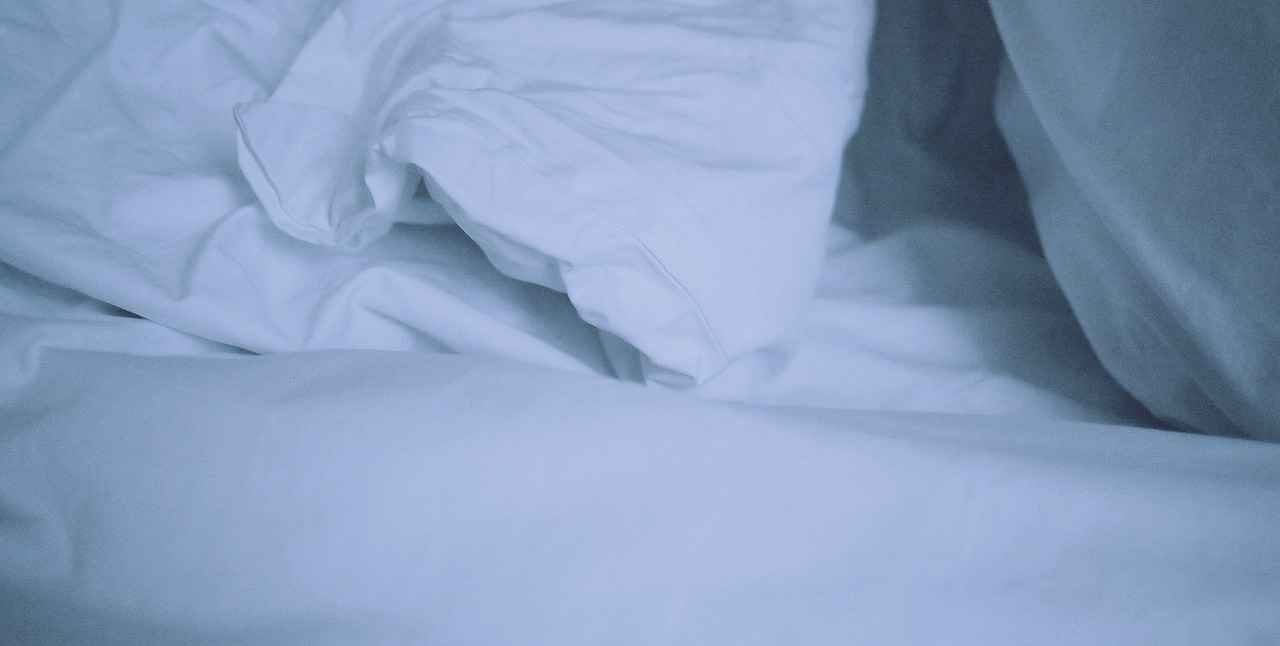
Craftsman Beds: The Arts and Crafts Movement
Craftsman beds represent a beautiful blend of simplicity and artistry, embodying the principles of the Arts and Crafts Movement. This movement, which emerged in the late 19th century, sought to counteract the mass production of furniture by emphasizing handcrafted quality and the use of natural materials. The result is a style that not only looks stunning but also resonates with those who value artisanal craftsmanship.
Craftsman beds are distinguished by their clean lines and sturdy frames. Unlike more ornate styles, Craftsman beds focus on functionality and durability, making them an ideal choice for both modern and traditional settings. The use of natural wood, often left with a natural finish, showcases the beauty of the material itself, allowing the grain to tell its own story.
When selecting a Craftsman bed, the choice of wood is crucial. Popular options include:
- Oak: Known for its strength and durability, oak has a distinct grain that adds character.
- Cherry: This wood darkens beautifully over time, enhancing the richness of the piece.
- Maple: A versatile option, maple offers a subtle grain and a smooth finish.
Choosing the right wood not only enhances the aesthetic appeal of the bed but also contributes to its longevity, making it a worthwhile investment.
Craftsman beds often feature design elements that reflect the movement’s philosophy:
- Simple Forms: The overall silhouette is straightforward, focusing on functionality.
- Exposed Joinery: This technique highlights the craftsmanship involved in the construction.
- Natural Finishes: Finishes are typically oil-based, allowing the wood’s natural beauty to shine.
These elements create a sense of warmth and authenticity, making Craftsman beds a focal point in any bedroom.
To complement a Craftsman bed, consider incorporating accessories that align with the style’s aesthetic. Here are some tips:
- Textiles: Choose bedding made from natural fibers like cotton or linen in earthy tones.
- Lighting: Opt for fixtures made of wrought iron or stained glass to enhance the Craftsman feel.
- Artwork: Select pieces that reflect nature or traditional craftsmanship to maintain the theme.
These thoughtful accessories can elevate the overall ambiance of the room, creating a cohesive and inviting space.
Investing in a Craftsman bed offers numerous benefits:
- Durability: Built to last, these beds withstand the test of time.
- Timeless Appeal: The classic design ensures that the bed will remain stylish for years to come.
- Sustainability: Often made from sustainably sourced materials, Craftsman beds are an eco-friendly choice.
For those who appreciate quality and craftsmanship, a Craftsman bed is not just a piece of furniture; it is a statement of values and a connection to a rich artistic tradition.
Characteristics of Craftsman Beds
Craftsman beds are a celebrated element of the Arts and Crafts movement, which emerged in the late 19th and early 20th centuries as a response to the mass production of furniture. This design philosophy emphasizes handcrafted quality, functionality, and the beauty of natural materials. The characteristics of Craftsman beds reflect a commitment to simplicity and durability, making them a popular choice for those who value both aesthetics and practicality.
Craftsman beds are distinguished by their clean lines and sturdy frames. The use of natural wood is a hallmark of this style, with artisans often selecting materials that showcase the wood’s inherent beauty. Each piece is typically handcrafted, ensuring that no two beds are exactly alike. This attention to detail not only enhances the bed’s visual appeal but also its structural integrity.
One of the defining features of Craftsman beds is their minimalist design. Unlike more ornate styles, Craftsman beds often feature straight edges and simple silhouettes. This approach allows the natural grain of the wood to take center stage, creating a warm and inviting atmosphere in any bedroom. The focus on functionality is evident in the bed’s construction, which prioritizes durability and ease of use.
Another key aspect of Craftsman beds is the use of quality materials. Popular choices include oak, cherry, and maple, all of which offer exceptional strength and a beautiful finish. These woods not only contribute to the bed’s longevity but also enhance its aesthetic appeal. The natural variations in the wood grain add character and uniqueness to each piece.
Craftsman beds often incorporate handcrafted details that reflect the skill and artistry of the maker. This may include mortise and tenon joinery, which provides strength without the need for metal fasteners, and decorative elements such as exposed joinery or subtle carvings that highlight the craftsmanship involved. These details serve as a testament to the value placed on artisanal work in the Craftsman style.
In terms of color, Craftsman beds typically feature rich, earthy tones that complement the natural wood. Stains may enhance the wood’s grain while preserving its organic look. The overall aesthetic is one of warmth and comfort, making Craftsman beds an ideal choice for creating a serene and inviting bedroom environment.
When selecting a Craftsman bed, the choice of wood is paramount. Oak, known for its durability and beautiful grain, is a favorite among Craftsman enthusiasts. Cherry offers a rich color that deepens over time, while maple provides a light, clean look that fits well in various design schemes. Each wood type brings its own unique characteristics, allowing homeowners to choose a bed that aligns with their personal style.
Moreover, the finish applied to the wood can significantly impact the bed’s appearance. A natural oil finish enhances the grain and texture, while a stain can add depth and richness. It’s essential to consider how the finish will interact with the overall decor of the bedroom, ensuring a cohesive look.
In summary, Craftsman beds are a beautiful blend of artistry and functionality. Their focus on quality materials, handcrafted details, and minimalist design principles makes them a timeless choice for those looking to create a sophisticated and inviting bedroom. By understanding the key characteristics and options available, homeowners can make informed decisions that reflect their style and values.
Choosing the Right Wood for Craftsman Beds
When it comes to selecting a bed that not only serves as a functional piece of furniture but also enhances the overall aesthetic of your bedroom, is crucial. Craftsman beds are celebrated for their simplicity, durability, and artisanal craftsmanship, making the choice of material vital in preserving these qualities.
Among the most favored wood options for Craftsman beds are oak and cherry. These woods are not just visually appealing; they also offer exceptional durability, ensuring that your bed withstands the test of time.
| Wood Type | Characteristics | Benefits |
|---|---|---|
| Oak | Strong, heavy, and has a prominent grain | Highly durable, resistant to wear, and offers a classic look |
| Cherry | Rich, warm tones that deepen with age | Beautiful finish, excellent workability, and long-lasting |
Choosing the right wood is not merely about aesthetics; it significantly impacts the bed’s longevity and stability. A well-constructed Craftsman bed made from high-quality wood can become a cherished heirloom, passed down through generations.
The natural beauty of wood adds a unique charm to Craftsman beds. Oak provides a rustic, traditional look with its visible grain patterns, while cherry offers a more refined appearance with its smooth texture and rich hue. The choice of wood can dictate the overall style of your bedroom, whether you prefer a cozy, rustic feel or a more elegant, polished look.
To ensure that your Craftsman bed remains in excellent condition, proper maintenance is essential. Regular dusting and occasional polishing can enhance the wood’s natural luster. Additionally, keeping the bed away from direct sunlight can prevent fading and discoloration.
In summary, selecting the right wood for Craftsman beds is a decision that should not be taken lightly. The combination of durability, aesthetic appeal, and the ability to age gracefully makes oak and cherry the top choices for those looking to invest in a timeless piece of furniture. Understanding the characteristics and benefits of each type of wood will help you make an informed decision, ensuring that your Craftsman bed not only meets your functional needs but also enhances the beauty of your bedroom.

French Provincial Beds: Elegance with a Rustic Touch
French Provincial beds embody a unique blend of elegance and rustic charm, making them a popular choice for those who desire a romantic and inviting bedroom atmosphere. Originating from the French countryside, these beds reflect a style that is both sophisticated and grounded, appealing to a wide range of tastes. Their design often incorporates curved lines, soft colors, and intricate detailing, which contribute to their timeless appeal.
The design of French Provincial beds is characterized by several key elements:
- Cabriole Legs: These elegantly curved legs add a touch of sophistication while providing stability.
- Tufted Upholstery: Soft, tufted headboards enhance comfort and visual appeal, inviting relaxation.
- Floral Motifs: Intricate floral carvings or fabric patterns evoke the natural beauty of the French countryside.
These features combine to create a bed that is not only functional but also a statement piece in any bedroom.
To enhance the aesthetic of a French Provincial bed, consider the following:
- Bedding: Choose soft, romantic fabrics such as linen or cotton in muted colors to complement the bed’s design.
- Curtains: Light, airy curtains can add to the overall softness of the room while allowing natural light to filter through.
- Decor: Vintage accessories, such as antique mirrors or rustic picture frames, can create a cohesive and inviting space.
These elements work together to create a harmonious and inviting bedroom environment.
When selecting colors for a French Provincial bedroom, opt for soft, muted tones that reflect the serene beauty of the countryside. Popular choices include:
- Pale Blues and Greens: These colors evoke a sense of calm and tranquility.
- Soft Whites and Creams: These shades provide a clean and classic backdrop for the room.
- Pastel Pinks and Lavenders: These hues add a romantic touch without overwhelming the senses.
French Provincial beds are typically crafted from high-quality materials that enhance their durability and elegance. Common materials include:
- Wood: Often made from oak or cherry, these woods provide a sturdy frame and a beautiful finish.
- Upholstery Fabrics: Luxurious fabrics such as velvet or brocade are often used for added comfort and style.
The choice of materials plays a crucial role in the overall aesthetic and longevity of the bed.
To keep your French Provincial bed looking its best, regular maintenance is essential. Here are a few tips:
- Dust Regularly: Use a soft cloth to remove dust from the bed’s surfaces and intricate carvings.
- Avoid Harsh Chemicals: Use gentle cleaners to preserve the finish of the wood and upholstery.
- Reupholster When Necessary: If the upholstery becomes worn, consider reupholstering to maintain the bed’s charm.
In conclusion, French Provincial beds offer a stunning combination of elegance and rustic charm, making them a perfect choice for those looking to create a romantic and inviting bedroom. By understanding their design elements, accessorizing thoughtfully, and maintaining their beauty, you can enjoy the timeless appeal of these exquisite beds for years to come.
Design Elements of French Provincial Beds
French Provincial beds are a stunning representation of elegance and rustic charm, combining the sophistication of French design with the warmth of countryside aesthetics. This style, rooted in the 18th century, evokes a sense of nostalgia and romance, making it a popular choice for those who appreciate timeless beauty in their bedroom decor.
- Cabriole Legs: One of the most distinctive features of French Provincial beds is the cabriole leg. These elegantly curved legs add a touch of grace and fluidity, creating a soft silhouette that enhances the overall design. The cabriole leg is often intricately carved, showcasing the artisan’s skill and attention to detail.
- Tufted Upholstery: The luxurious feel of tufted upholstery is another hallmark of French Provincial beds. This technique involves pulling the fabric tight and securing it with buttons, creating a plush and inviting surface. The tufting not only adds texture but also enhances the visual appeal, making the bed a focal point in the room.
- Floral Motifs: Floral patterns are prevalent in French Provincial design, often seen in the upholstery and decorative accents. These motifs bring a sense of nature indoors, creating a serene and tranquil atmosphere. The soft, pastel colors typically used in these patterns further enhance the romantic feel of the bedroom.
In addition to these key elements, the overall shape and structure of French Provincial beds are characterized by gentle curves and soft lines. This design approach creates a harmonious balance, making the bed not just a piece of furniture but a statement of style. The use of light woods, such as oak or pine, often painted in soft hues, complements the intricate details, ensuring that each piece feels both elegant and approachable.
When accessorizing a French Provincial bed, it is essential to maintain the theme of comfort and elegance. Soft linens in muted colors, combined with plush pillows and throws, can enhance the inviting nature of the bed. Vintage-inspired decor, such as ornate mirrors or distressed furniture, can further enrich the overall aesthetic, creating a cohesive and charming space.
Moreover, the versatility of French Provincial beds allows them to blend seamlessly into various interior styles. Whether you prefer a more traditional approach or a modern twist, these beds can adapt to your vision, offering a unique charm that elevates any bedroom setting.
In conclusion, the design elements of French Provincial beds—cabriole legs, tufted upholstery, and floral motifs—are integral in creating a timeless and elegant atmosphere. By understanding and appreciating these features, you can transform your bedroom into a sanctuary of sophistication that reflects both beauty and comfort.
Accessorizing French Provincial Beds
is an essential step in creating a harmonious and inviting bedroom atmosphere. The French Provincial style is characterized by its elegance and rustic charm, making it a popular choice for those seeking a romantic and cozy space. To achieve this aesthetic, it is crucial to select the right bedding, curtains, and decor that complement the overall design.
When choosing bedding, opt for soft, luxurious fabrics such as cotton, linen, or silk. These materials not only enhance comfort but also contribute to the overall elegance of the room. Consider selecting bedding in muted tones or pastel shades, which are typical of the French Provincial palette. Floral patterns or subtle stripes can add a touch of sophistication while maintaining a cohesive look.
Curtains play a vital role in framing the windows and adding depth to the room. Choose curtains made from light, flowing fabrics to allow natural light to filter in while providing privacy. Sheer curtains can soften the sunlight, creating a warm and inviting ambiance. For a more dramatic effect, consider layered curtains with a heavier fabric on the outside and a sheer material underneath. This combination not only enhances the aesthetic but also adds texture to the space.
The right decor can elevate the French Provincial aesthetic significantly. Incorporate vintage accessories such as ornate mirrors, antique lamps, and decorative pillows. These elements can create a sense of history and character in your bedroom. A well-placed vintage trunk at the foot of the bed can serve as both a functional piece and a decorative element, adding to the rustic charm.
In addition to these larger elements, consider adding smaller decor items that reflect the French Provincial style. Items such as ceramic vases, wrought iron candle holders, and botanical prints can enhance the overall theme. A gallery wall featuring framed art or family photos in vintage frames can create a personal touch while maintaining the aesthetic.
To ensure a cohesive look, pay attention to the color scheme of your accessories. Soft whites, muted greens, and gentle blues can create a serene environment, while splashes of gold or bronze can add a touch of luxury. Mixing textures is also essential; combining smooth fabrics with rougher materials like wood or metal can create visual interest and depth.
Lastly, don’t forget about the lighting. The right lighting can transform the mood of your bedroom. Opt for soft, warm lighting through table lamps or wall sconces to create a cozy atmosphere. Consider using dimmer switches to adjust the brightness according to the time of day and your mood.
By carefully selecting your bedding, curtains, and decor, you can create a cohesive and inviting space that embodies the elegance of the French Provincial style. This thoughtful approach to accessorizing will not only enhance the beauty of your bedroom but also provide a comfortable retreat that reflects your personal style.
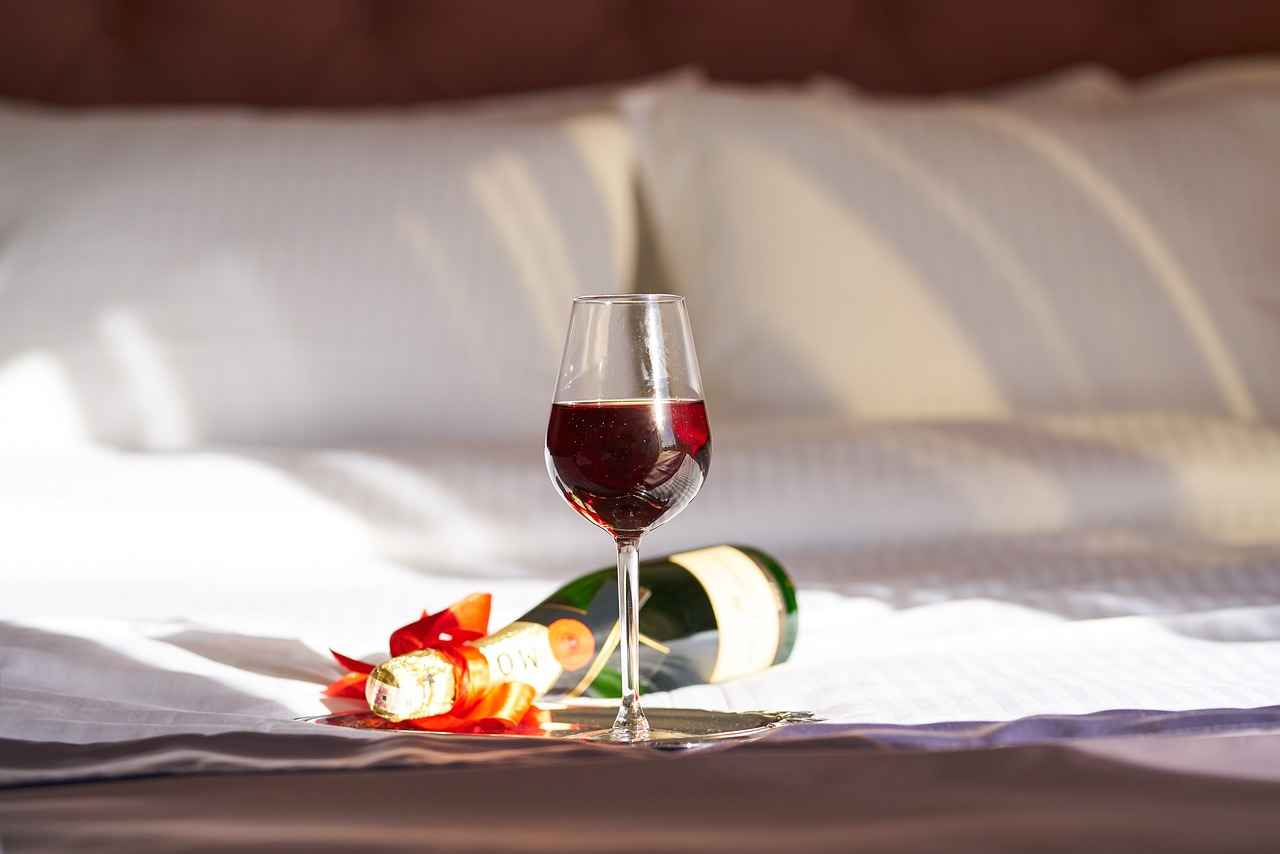
Modern Interpretations of Old Design Beds
offer a fascinating blend of traditional craftsmanship and contemporary aesthetics. This innovative approach not only pays homage to the rich history of bed design but also allows for a level of versatility that caters to the diverse preferences of modern homeowners. By merging classic elements with modern trends, these beds create a unique focal point in any bedroom while ensuring a timeless appeal.
One of the most compelling aspects of modern interpretations is the way they allow for personalization. Homeowners can choose from a variety of styles, materials, and finishes, enabling them to create a space that reflects their individual taste. For example, a traditional Victorian bed frame can be reimagined with a sleek, minimalist finish, making it suitable for a contemporary setting.
Moreover, the fusion of old and new styles encourages creativity in interior design. Mixing vintage elements with modern decor can result in a harmonious and visually engaging environment. For instance, pairing a rustic Colonial bed with modern geometric bedding can create an intriguing contrast that draws the eye and adds depth to the room.
When incorporating old design beds into modern spaces, it’s essential to consider factors such as scale, color, and texture. A large, ornate bed may feel overwhelming in a small room, while a sleek, low-profile frame can enhance the sense of space. Additionally, selecting a color palette that complements both the bed and the surrounding decor can unify the design. Soft neutrals or bold accents can transform the overall ambiance of the bedroom.
Another trend in modern interpretations is the use of sustainable materials. Many designers are now opting for eco-friendly woods and non-toxic finishes, reflecting a growing awareness of environmental impact. This not only appeals to the eco-conscious consumer but also adds a contemporary twist to traditional designs.
Furthermore, the incorporation of technology into bed design is becoming increasingly popular. Features such as adjustable bases, integrated lighting, and even smart home compatibility can enhance both comfort and functionality. These modern conveniences make old design beds more appealing to a tech-savvy audience, bridging the gap between historical aesthetics and modern living.
Ultimately, modern interpretations of old design beds serve as a testament to the enduring allure of classic styles. They remind us that while trends may change, the fundamental principles of design—such as balance, harmony, and functionality—remain timeless. By embracing both the past and the present, homeowners can create a bedroom that is not only stylish but also rich in character and history.
- Versatility: Old design beds can fit into various interior styles, from rustic to minimalist.
- Personalization: Homeowners can customize materials and finishes to suit their tastes.
- Technology Integration: Modern features enhance comfort and functionality.
- Sustainability: Eco-friendly materials appeal to environmentally conscious consumers.
In conclusion, the modern interpretation of old design beds is a celebration of timeless elegance and personal expression. By thoughtfully blending traditional elements with contemporary design, these beds not only enhance the aesthetic of a bedroom but also create a space that is uniquely yours.
Combining Old and New Styles
In today’s design landscape, the interplay between traditional and modern aesthetics has become increasingly popular. The act of mixing old design beds with contemporary decor creates a unique and stylish bedroom environment that reflects both history and innovation. This fusion not only allows for creativity but also pays homage to the rich heritage of design principles that have stood the test of time.
The appeal of combining old and new styles lies in the ability to create a personalized space. Each piece of furniture tells a story, and when old design beds are incorporated into modern settings, they serve as a focal point that sparks conversation. This blend can evoke feelings of nostalgia while also embracing the freshness of contemporary design.
When selecting an old design bed to pair with modern decor, consider the following:
- Style Compatibility: Ensure that the bed’s style complements the overall theme of your bedroom. For instance, a Victorian bed can add a touch of romance, while a Craftsman bed brings in a rustic charm.
- Material Considerations: Pay attention to the materials used in the bed’s construction. A wooden bed can harmonize beautifully with modern metal accents, creating a dynamic contrast.
- Color Coordination: Choose colors that either match or complement your existing decor. Neutral tones can create a seamless transition between old and new.
To achieve a harmonious balance, consider the following design elements:
- Textural Variety: Mixing various textures, such as soft linens with a wooden bed frame, can create visual interest and depth.
- Accessorizing Thoughtfully: Use modern accessories, such as geometric-patterned pillows or contemporary artwork, to enhance the traditional bed without overwhelming it.
- Lighting Choices: Incorporate modern lighting fixtures, like sleek pendant lights or minimalist lamps, to juxtapose the ornate details of an old design bed.
Here are some practical tips to successfully integrate old design beds into modern spaces:
- Scale Matters: Ensure that the size of the bed fits well within the room. A large, ornate bed can dominate a small space, while a smaller bed can get lost in a grand room.
- Layering Elements: Layering different design elements, such as rugs and throws, can help bridge the gap between old and new styles.
- Personal Touches: Include personal items, such as photographs or heirlooms, to create a sense of belonging and warmth.
Ultimately, the combination of old design beds with modern decor is a testament to the timelessness of design. By thoughtfully selecting and integrating elements from both worlds, you can create a bedroom that is not only stylish but also reflective of your unique taste and personality. This fusion of styles encourages a deeper appreciation for the craftsmanship of the past while embracing the innovative possibilities of the present.
Tips for Incorporating Old Design Beds into Modern Spaces
Integrating old design beds into modern spaces can create a stunning visual contrast that enhances the overall aesthetic of your bedroom. The key is to approach the integration with thoughtfulness and an eye for detail. Here are some effective tips to help you achieve a harmonious blend of the old and the new.
- Consider Scale: When placing an old design bed in a modern room, it’s essential to consider the scale of the bed in relation to the surrounding furniture. A large, ornate Victorian bed can dominate a small room, while a minimalist Craftsman bed can complement modern decor beautifully. Ensure that the bed fits well within the space to maintain balance.
- Choose Complementary Colors: The color palette plays a crucial role in creating harmony. While old design beds often feature rich, deep colors, modern spaces tend to use lighter, more neutral tones. Consider painting the walls in soft, muted colors that can highlight the bed’s features without overwhelming the space. Alternatively, you can use bold accent colors in accessories to create a striking contrast.
- Mix Textures: Texture adds depth to any room. Combining the smooth finish of modern furniture with the intricate details of an old design bed can create a visually appealing dynamic. For instance, pair a wooden Colonial bed with sleek metal bedside tables or a contemporary upholstered chair to enhance the overall texture of the room.
- Accessorize Thoughtfully: The bedding and accessories you choose can significantly impact the look of your bed. Opt for modern linens with geometric patterns or solid colors that contrast with the bed’s vintage style. Adding contemporary throw pillows or a stylish blanket can bridge the gap between old and new, creating a cohesive look.
- Incorporate Modern Lighting: Lighting can transform the ambiance of a room. Consider using modern light fixtures, such as pendant lights or sleek floor lamps, to provide a contemporary touch. This contrast will draw attention to the bed while ensuring that the overall atmosphere remains inviting and warm.
- Curate a Balanced Layout: The arrangement of furniture around the bed is crucial for achieving balance. Avoid overcrowding the space with too many pieces. Instead, create a layout that allows each element to breathe, ensuring that the old design bed remains the focal point of the room.
By paying attention to scale, color, and texture, you can successfully integrate old design beds into modern spaces. Thoughtful choices not only highlight the unique characteristics of these beds but also allow them to coexist beautifully with contemporary elements. This approach results in a bedroom that feels both timeless and current, offering a sanctuary that reflects your personal style.
Frequently Asked Questions
- What are the main styles of old design beds?
Old design beds come in various styles, including Victorian, Colonial, Craftsman, and French Provincial. Each style has its unique characteristics and reflects different historical craftsmanship.
- How can I incorporate Victorian elements into my bedroom?
To add Victorian charm, focus on ornate details like high headboards and elaborate footboards. Rich fabrics and jewel tones can enhance the romantic atmosphere, making your bedroom feel luxurious.
- What materials are commonly used in Craftsman beds?
Craftsman beds typically use natural woods such as oak and cherry. These materials not only provide durability but also contribute to the warm, handcrafted aesthetic that defines this style.
- Can I mix modern decor with old design beds?
Absolutely! Mixing old design beds with modern decor can create a unique and stylish space. Just be mindful of the scale, color, and texture to maintain a harmonious balance between the old and the new.
- What accessories should I use with French Provincial beds?
To enhance the French Provincial aesthetic, opt for soft fabrics, vintage accessories, and floral motifs. Bedding, curtains, and decorative elements should complement the elegance and rustic charm of the bed.














